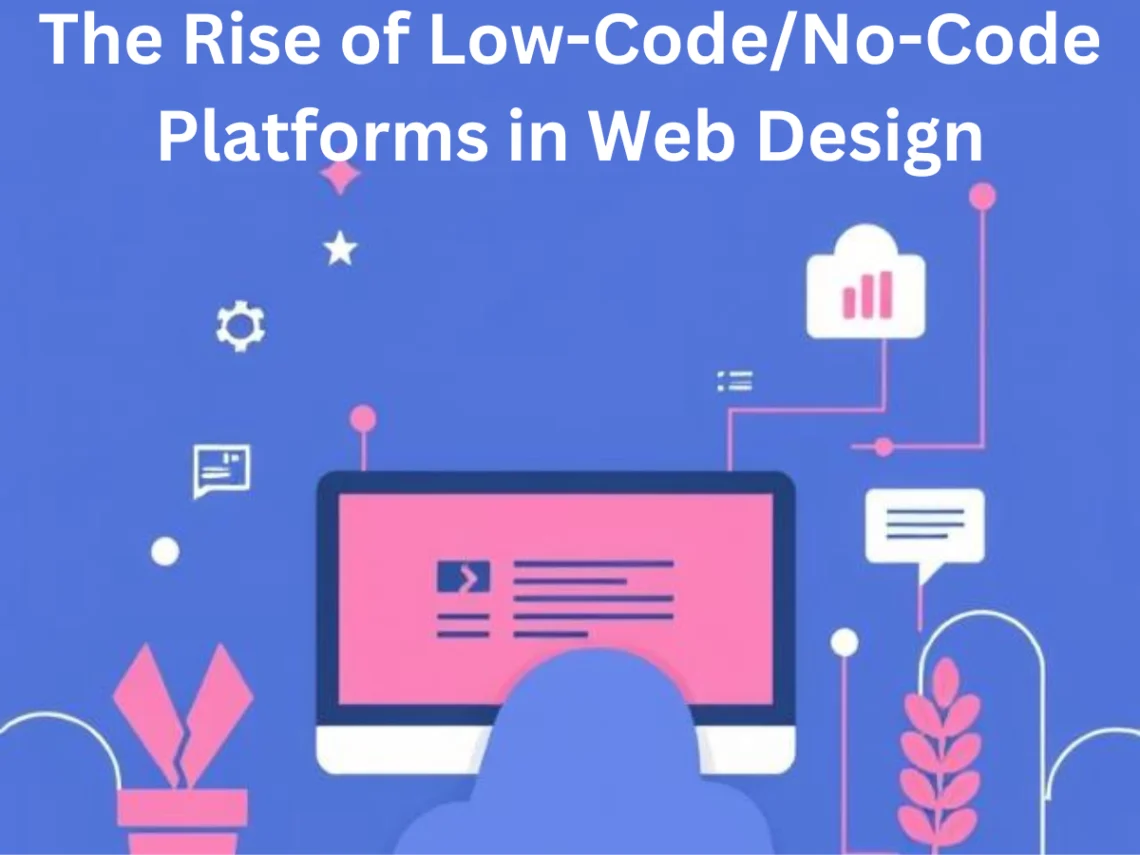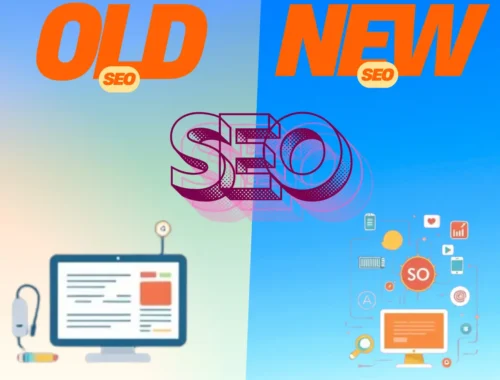
The Rise of Low-Code/No-Code Platforms in Web Design
Table of Contents
ToggleThe Future of Web Design: How Low-Code/No-Code Platforms Are Changing the Game
The world is being rebuilt in code, and web design is evolving rapidly along with it. In the 1990s, HTML language with manual web design coding was the norm. We have come a long way since then due to the rising expectations in user experience(UX), which is moving towards AI-driven personalization and no-code platforms.
Now, no-code or low-code platforms are gaining massive popularity in software development, SaaS(software as a service) solutions, and web applications.
As of 2024, we have over 5 billion internet and social media users, and the need for websites and web apps that cater to these online users is only increasing.
The prerequisite for extensive coding knowledge is now getting eliminated, and small businesses have easy tools to create professional, functional websites. The process has become modular and visual, and text-based coding is now a thing of the past.
Accessibility and efficiency have become even more crucial, and we are seeing a rise in the adoption of digital solutions. This is giving way to increased creativity and making development accessible to everyone.
Understanding Low-Code and No-Code Platforms
Low-code platforms provide a user-friendly interface where some basic coding knowledge is still required. It’s not a prerequisite but helps enhance customization. According to Statista, the global low-code platform revenue exceeds $30 billion and grows 26 percent annually as of 2024.
No-code platforms are entirely visual and rely on drag-and-drop builders and pre-designed templates for website creation.
Both low-code and no-code platforms share the goal of democratizing website development. They are now essential resources for companies trying to build or improve their online presence without breaking the bank.
Web Designing Minus the Coding: The Benefits
By taking coding out of the equation, web designing becomes an easy-to-understand process that can be done a lot faster.
Here are a few benefits that no coding brings:
Accessibility for All Skill Levels
Bridging the technical gap is one of these platforms’ biggest benefits. Websites can be designed and launched by entrepreneurs and small business owners based on their preferences.
As Forbes points out, such accessibility empowers digital innovators as well as large enterprises.
Faster Development Cycles
Traditional web development can take weeks or even months. Low-code and no-code platforms streamline this process, enabling websites to go live in a fraction of the time. This speed is increasingly critical, especially in industries where quick adaptations are essential.
Cost-Effectiveness
By reducing or eliminating the need for professional developers, businesses can allocate resources elsewhere. This cost-efficiency is particularly beneficial for startups and small businesses operating on tight budgets.
Customization Without Complexity
These platforms offer simplicity and flexibility in equal measure. While users can rely on pre-made templates, many platforms also allow for further customization to align with the brand identity. Advanced users can incorporate many additional functionalities to ensure that even basic designs are unique.
Hocoos recommends using AI-powered website-building platforms that can cater to entrepreneurs and professionals with no technical expertise.
Why Businesses Are Adopting Low-Code/No-Code Platforms?
Small Businesses, Now Empowered
Businesses with limited technical resources use these platforms to compete with larger players. The user-friendly interfaces allow them to create visually appealing, fully functional websites that meet customer expectations.
Web Development, Now In-House
Large organizations are finding it efficient to deploy these platforms for internal projects. Marketing teams, for instance, can quickly create landing pages and microsites without relying on IT departments. This saves time and increases productivity.
Continuous Updates
Low-code and no-code platforms make it easy to update content and add features. Businesses quickly respond to market trends and user feedback, ensuring their websites remain relevant and current.
Challenges of Low-Code/No-Code Platforms
1. Limited Customization
While LCNC platforms offer customization, they cannot match the flexibility of custom-coded websites. Advanced developers may find them restrictive.
2. Performance and Speed Issues
Some websites built on LCNC platforms may experience slower load times due to excessive third-party scripts and pre-built components.
3. SEO Limitations
Although most platforms offer SEO tools, they may not provide full control over advanced SEO settings, such as custom schema markup and server-side optimizations.
4. Dependency on the Platform
Since websites rely on the platform’s ecosystem, businesses must adhere to their policies and pricing changes. Switching platforms can be difficult.
5. Security Concerns
Some LCNC platforms have security vulnerabilities that developers have limited control over, increasing potential risks.
Best Low-Code/No-Code Platforms for Web Design
1. Wix
- Best for beginners
- Drag-and-drop editor
- SEO and eCommerce features
2. Webflow
- Advanced design customization
- Perfect for designers
- Strong SEO capabilities
3. Shopify
- Best for eCommerce stores
- Integrated payment options
- Mobile-friendly design
4. Bubble
- Best for web applications
- No-code backend functionality
- Supports database integration
5. WordPress (with Elementor)
- Flexible and customizable
- Large community support
- SEO-friendly
AI: The Future of Web Design
As IBM notes, the speed and velocity of changes happening due to AI in the last three years have been massive. There is a big shift underway in how websites are built in the future, with AI already being a reality. With machine learning advancing rapidly, AI-powered website development will only improve. These platforms will offer predictive design features and grow even more potent.
As AI becomes more affordable to implement, more companies and individuals will have access to tools previously only available to professionals. This will increasingly serve a variety of purposes.
Final Thoughts About Low-Code/No-Code Platforms
The rise of low-code/no-code platforms is revolutionizing web design, making it more accessible and efficient. Whether you’re a business owner, freelancer, or entrepreneur, these platforms provide a cost-effective way to establish an online presence.
While LCNC platforms have limitations, they are continuously improving and will play a crucial role in the future of web development.
Are you ready to embrace the low-code/no-code revolution? Now is the perfect time to explore these platforms and build your dream website without technical barriers!
FAQs: Low-Code/No-Code Platforms
What are low-code no-code platforms?
Platforms for low-code and no-code development are useful for those who lack the time or expertise to write code. End users don’t care about the minutiae of these low-code and no-code frameworks, even though they are based on real coding languages like PHP, Python, and Java.
What are the benefits of low-code platform?
Development is significantly accelerated by low-code, which also shortens implementation timeframes, lowers technical debt, and facilitates the integration of generative AI into end-to-end process automations to increase operational productivity.
What is the primary goal of no-code platforms?
Businesses can streamline procedures without totally updating their fundamental systems by using no-code technologies. Businesses may use data and functionality from various sources thanks to their integration capabilities, which result in a cohesive and efficient environment.
How does no-code platform work?
A no-code platform is a software development system that enables users to rapidly and easily build, alter (to a certain extent), and deploy applications using drag-and-drop interfaces, visual workflows, and pre-built components.
You May Also Like

Old SEO VS New SEO – 2025 Guide
22 January 2025
Keeper standard test
14 December 2024

